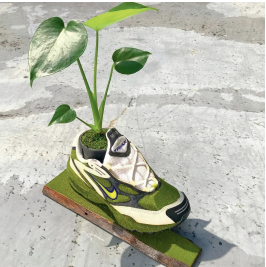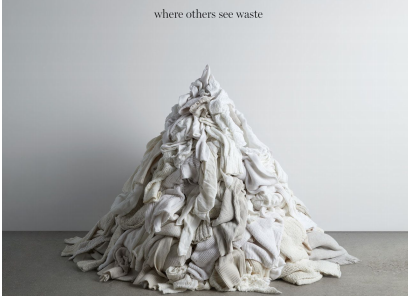Blog
Sustainable for Spring!
Written by Breezy Diabo
The world seems to be turning upside down. There are times I simply want to run and hide under my covers with the ever-changing weather patterns, corrupt politicians, and new abortion bans. There are so many aspects in life none of us can control, but we can control what we buy and what we put on our bodies. Know what you wear!
Sustainable fashion can be defined as shoes, clothing, and accessories that are manufactured and marketed considering both the environment and economy. Most garments have some sort of negative impact on the environment, but there are brands who are rising to the occasion to make a difference.
“Fast fashion” is clothing and accessories that are produced cheaply and intended for short term use and ‘ethical fashion’ weighs the longevity of a product. Companies who practice sustainability, continuously work to improve all stages of production and garment life. These include designs, raw material production, manufacturing, working conditions, transportation of goods, storage, marketing, sales, repairs, and recycling of the product and its components.
Environmentally
The idea is to reduce unwanted environmental effects and to ensure efficient and careful use of the earth’s natural resources. This includes water, soil, animals, plants, biodiversity, and selecting renewable energy resources (wind and solar.)
Economically
Designers, companies, and brands try to improve the working conditions for the workers in their factories, transportation, and in stores.
Health & Wellness
Statistically, one percent of clothing that you try to donate or recycle ends up in landfills which take up to 40 years to break down. During that process methane (gas) is released which is more potent than carbon. On top of that, dyes and finishes from the production processes are dangerous for the workers and can get into the community water sources. Buying sustainable fabrics not only feel good but is better for your skin! As a society, we often buy on trend and never really think about what synthetic chemicals and dyes are being used on our clothing which can cause rashes, acne and other skin irritations. Note* It is always smart to wash ‘’new” clothing before wearing due to residues, packaging and shipping.
Consumers
We could help to prevent this process by doing clothing swaps with friends and making your own swapping events. Some brands now allow you to recycle old clothing for coupons and discounts for newer products. Also being more mindful as you shop is key! Look for pieces you want that are of quality and will last longer in your closet. Ask yourself, “Is this really my style?” It’s all about quality, not quantity.
DESIGNERS
When buying skins, try to buy them domestically instead of internationally to lower your carbon footprint and make sure that you are not buying in bulk to avoid waste. Jessica Ding, creator and designer of Love Lorn Lingerie displays how leather truly can be sustainable. Leather is the heart of Love Lorn Lingerie and Jessica practices using every little piece of leather she purchases throughout her leather lingerie line which includes: harness belts, collars, garter belts, and more. Another trick designers can do to become more eco-friendly is by using safer dye baths for colors and thinking about not only your buyers and consumers but where you are getting your sources and the working conditions of others.
Top Sustainable Fabrics :
Linen – plant based fabric made of flax, processed without chemicals. 100% cotton – super durable and breathable. Wool – animal base, creates efficient warmth and has resiliency. Hemp – plant based stronger than cotton.
F is For Female Eco-friendly Designers!
I wanted to highlight women who are on top of their game in the sustainable fashion world. Women supporting women is a beautiful thing! A common misconception about eco-friendly fashion is that the aesthetic must be “hippie” or “granola” and that it “must be vegan”. Some of the designers below use leather that is produced with the environment and economy in mind and what they all have in common is how modern, functional, and everlasting their designs are.
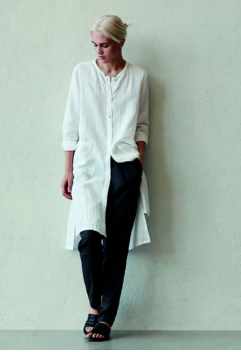
Eileen Fisher
Eileen Fisher is one of my favorites. They have a whole section online that talks about what goes on behind the label. Eileen Fisher tells it like it is: from the future is female, core values, human rights, to fibers and dyes, and where the resources are coming from. They even have events geared towards women coming together to find the truth, self love, and being a boss. The garments can get pricey but, the brand buys back and resells its own label’s gently worn clothing so you can get it for a lower price in excellent condition. If the clothing isn’t good enough to be resold, it’ll turn the fabric into art using special felting techniques.
Stella McCartney
Stella McCartney’s commitment to sustainability is evident throughout all her collections. This designer has been in my top 10 favorite designers for years. The brand is noted for being responsible, honest, and a modern company. It is key for this vegetarian designer to respect nature, animals (she doesn’t use animal byproducts in her designs), and people. The use of organic cotton eliminates the use of toxic and persistent chemicals, improves soil health and increases water conservation. All of which is better for the environment and for farmers and their communities. This explains why Stella has increased the amount of certified organic cotton used in the brands collections over the years. Her brand launched in 2001 and she now has 51 stores around the world. In 2008, she launched a lingerie collection which is sexy and very affordable compared to some of her other products. I am a sucker for black lingerie. To me it evokes a timeless, chic, and effortless look. Stella is great at doing just that with the Katie Cuddling Set.
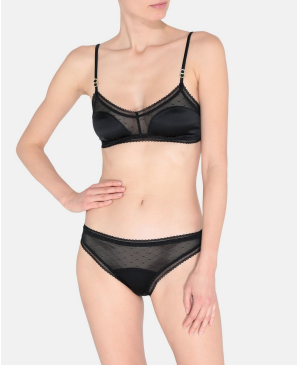
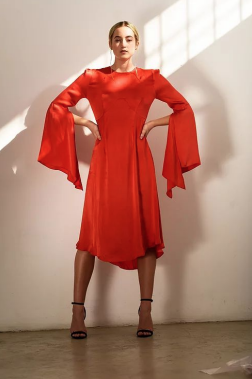
Karenine Arraya
Karenine Arraya is a wonderful sustainable designer based in NYC. “I created Ninêh because as a customer, I want to feel a connection to the source. I want to be educated about what I am putting on my body and at what human cost. We are not just about sustainability and high end design, but we are about dignity and respect.” I had the honor to chat with Karenine who created Ninêh back in 2017 and ask her some questions about her line, what being eco-friendly meant to her, and where she would like to see fashion in the future.
“The waste we are creating really needs to change. It’s a big mess and we need to find out the deep truth of it.”
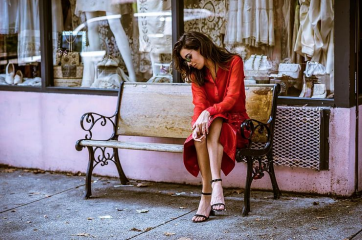
How is your brand sustainable and why did you find it important for it to be eco-friendly?
I was a designer for 15 years in fast fashion and saw first hand the lack of humanity and the waste throughout the supply chain. I worked with denim and contemporary styles out of college. I traveled to China, India, Bangladesh, etc. to different factories and they were dreadful. These companies weren’t getting the whole truth out to the public. Workers were not getting fair wages. The chemicals being used were damaging to the people and children working with it and inhaling it. It took me a really long time to get out of this cycle. Once I had the means to start my own brand, I wanted to source my own factories and really know what was going on. I wanted to make sure it was more like a family operation where the workers were being treated right. For me, it was mostly about the people behind the company. The sustainable aspect came after. I was more passionate about the people I worked with and so I started researching fabrics and discovered which ones I wanted to work with. I use 100% mulberry silk which uses less water and toxins. I also use premium leather. Leather is timeless and can be passed down from generation to generation. Premium leather is better for the people working with it and it is stronger and offers a nicer water resistance.
WHAT INSPIRES YOU?
The craftsmanship of the of the artists I work with, vintage shopping, and women in general inspire me. I try to celebrate the strength and femininity of women and their bodies. I strive to find a balance in taking on the world without sacrificing style. I also think it’s important I make clothing I would want to wear.
WHAT ARE YOUR FAVORITE PIECES FROM YOUR LINE?
I love my dresses. I’m a dress woman. They’re timeless and have that “wow” factor.
WHAT ARE THE COLORS YOU ARE SHOWCASING IN THIS COLLECTION?
The colors for the most part are pastel and clean due to natural dyes. Black ivory, bright red and lavender. I like to use colors that won’t go out of style quickly.
WHERE WOULD YOU LIKE TO SEE FASHION IN THE FUTURE?
I would love for people to pay more attention to sustainable brands. So many companies and consumers are killing the world and it’s become a crisis. Factories are outsourcing to people that are being exploited and not treated properly due to workloads. Hopefully one day the mentality of the consumer changes. Fast fashion is like fast food. If you go into MCDonald’s you can get something fast and cheap, but it can cause health issues. When you shop fast fashion you are not getting something of quality. Consumers should look for pieces that will last and won’t fall apart after two or three uses. The waste we are creating really needs to change. It’s a big mess and we need to find out the deep truth.
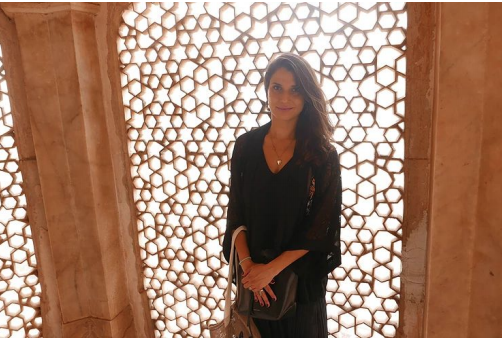
Based in NYC you can buy her products through her website https://www.nineh.com/ and her brand will be on https://faire.shop/ next week. Ninêh also does a lot of fun pop-ups throughout the city and will have one on June 10th (info is up on her Instagram.)
What does sustainability mean to you? There are many steps in the journey to sustainability, some small, some big, but it all adds up towards a better future.
Written by Breezy Diabo

